Inflationary pressures in the US simmered down on the heels of cheaper gasoline and other fuel costs, which may help persuade the Federal Reserve to ease up a touch on the monetary policy brakes.
In the UK, the economy shrank in the second quarter for the first time since Covid-19 lockdowns more than a year ago. Singapore reduced its growth forecast for this year after its economy contracted last quarter, while rapid inflation encouraged steep interest-rate hikes by monetary authorities in Mexico and Argentina.
Here are some of the charts that appeared on Bloomberg this week on the latest developments in the global economy:
US
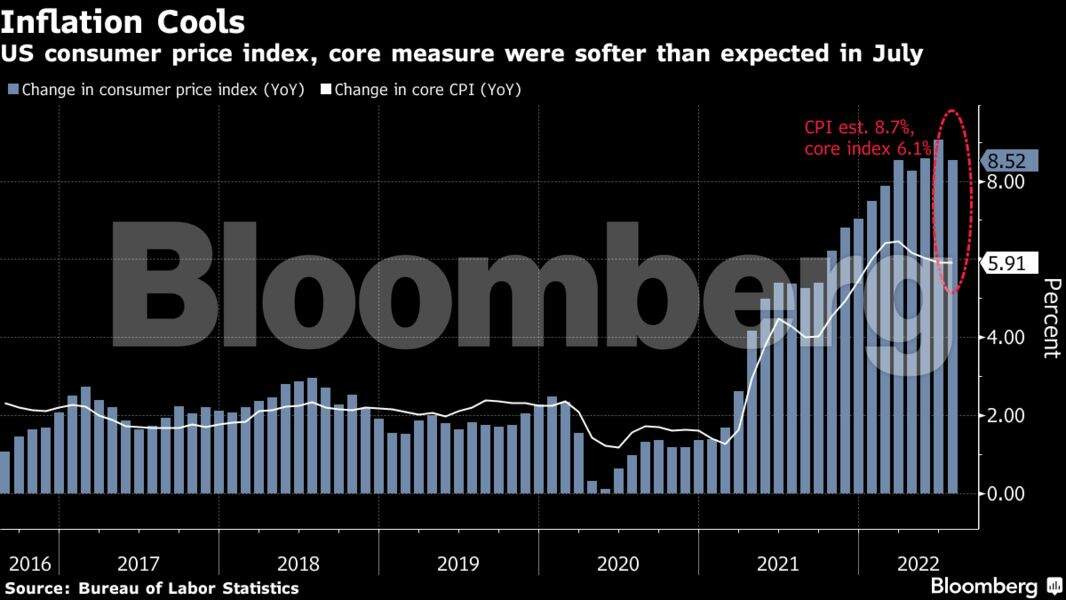
Inflation decelerated in July by more than expected, reflecting lower energy prices, which may take some pressure off the Federal Reserve to continue aggressively boosting interest rates. Consumer prices increased 8.5% from a year ago after hitting a more than 40-year high of 9.1% a month earlier.
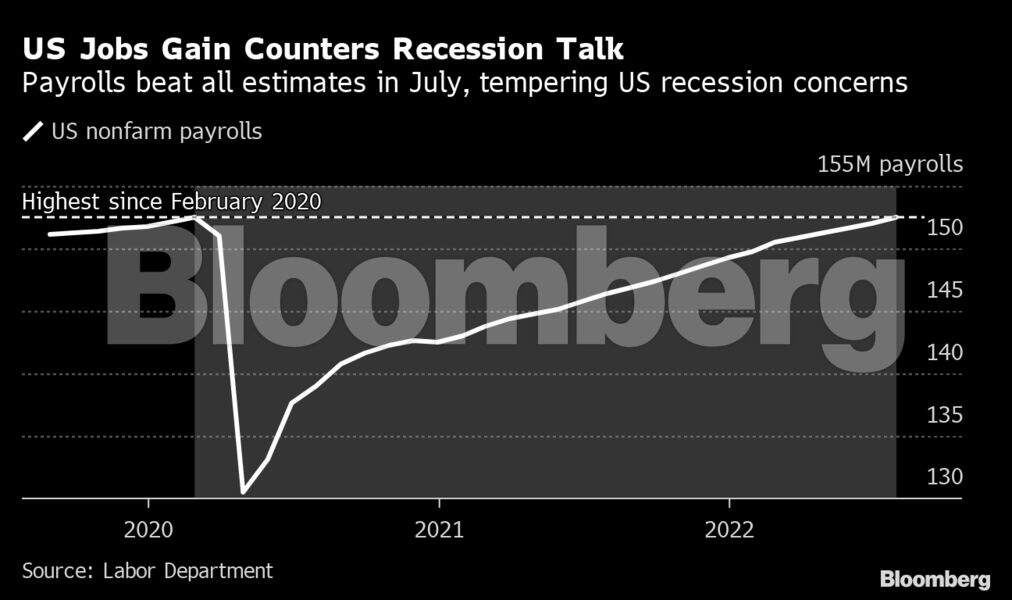
Ending emergency unemployment benefits had a significant impact on boosting employment, according to a St. Louis Fed working paper that may underline Republican criticism of a 2021 program.

Rental costs are soaring at the fastest pace in more than three decades, surpassing a median of $2,000 a month for the first time ever.
Europe
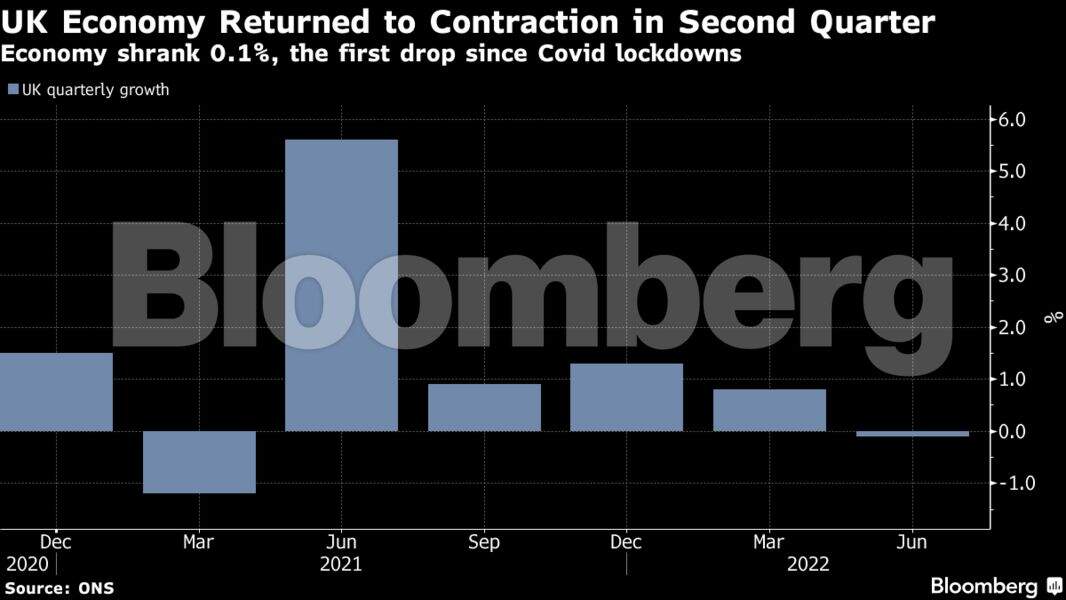
The UK economy shrank in the second quarter for the first time since the pandemic, driven by a decline in spending by households and on fighting the coronavirus. Gross domestic product fell 0.1% after an 0.8% gain in the first quarter. The Bank of England expects that inflation raging at a 40-year high will tip the economy into a recession later this year.
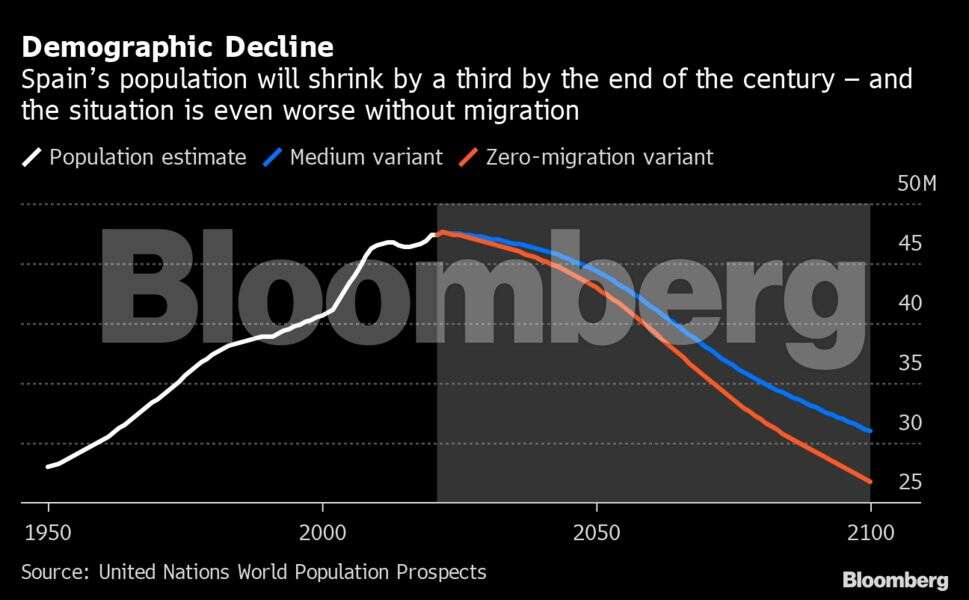
Spain is opening its doors to foreign workers to fix labor shortages and ease a demographic slump threatening its future prosperity. In contrast with more anti-immigrant politics in much of Europe, the government has loosened rules to allow the recruitment of employees in their countries, mostly in Latin America, for both skilled and unskilled jobs that are hard to fill.
Asia
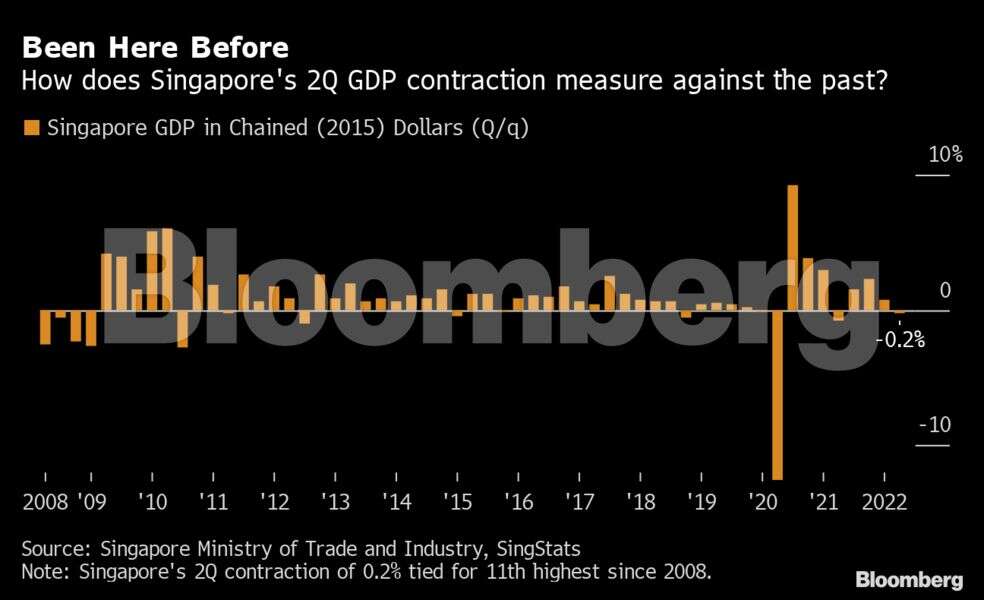
Singapore trimmed its 2022 growth forecast to reflect an increasingly challenging global environment, after the economy slipped into contraction in the second quarter. Final data for the June quarter Thursday showed gross domestic product shrank 0.2% from the previous three months, and worse than the zero growth estimated by Ministry of Trade and Industry earlier.

A global spell of high inflation, aggressive monetary tightening and the risk of a recession are prompting economists to revise Indonesia’s economic forecasts for the remainder of the year. Analysts raised inflation projections for the third and fourth quarters by almost a full percentage point to 5% and 5.15%, respectively, median forecasts from Bloomberg’s latest monthly survey showed.
Emerging Markets
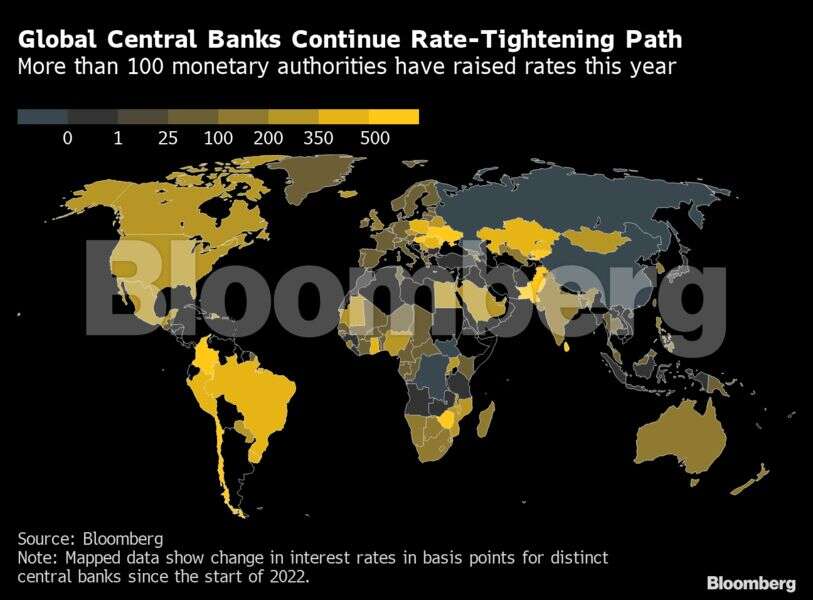
Argentina’s central bank raised its benchmark Leliq rate to 69.5%, representing the largest hike in almost three years and signaling a more aggressive stance against surging inflation. Mexico’s central bank boosted its key rate to an all-time high of 8.5%.
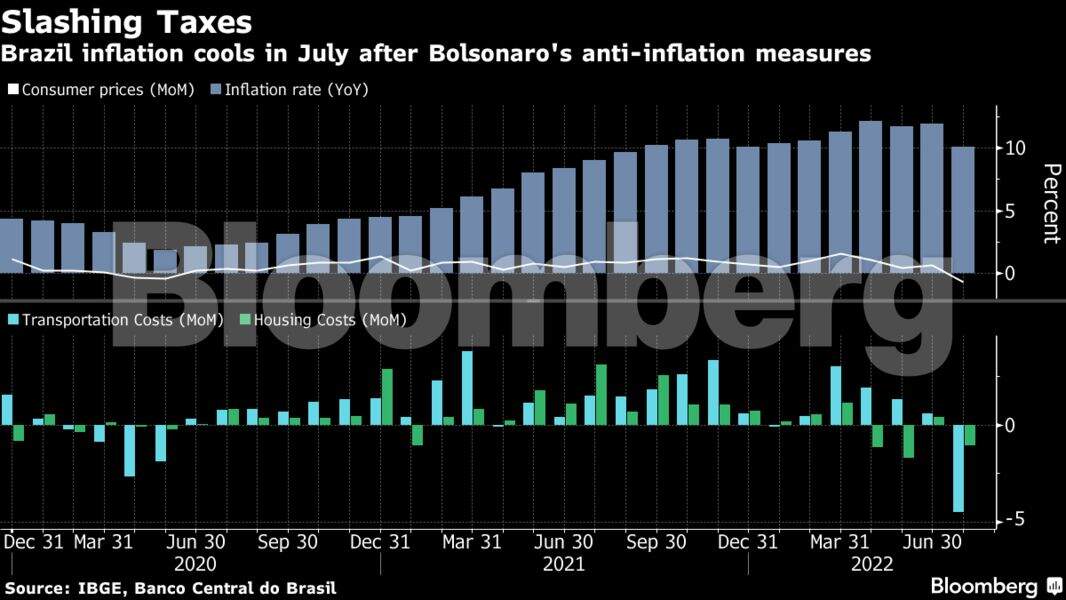
Brazil consumer prices tumbled by the most on record in July after President Jair Bolsonaro slashed utility taxes to tame the soaring cost of living and lift his re-election chances.
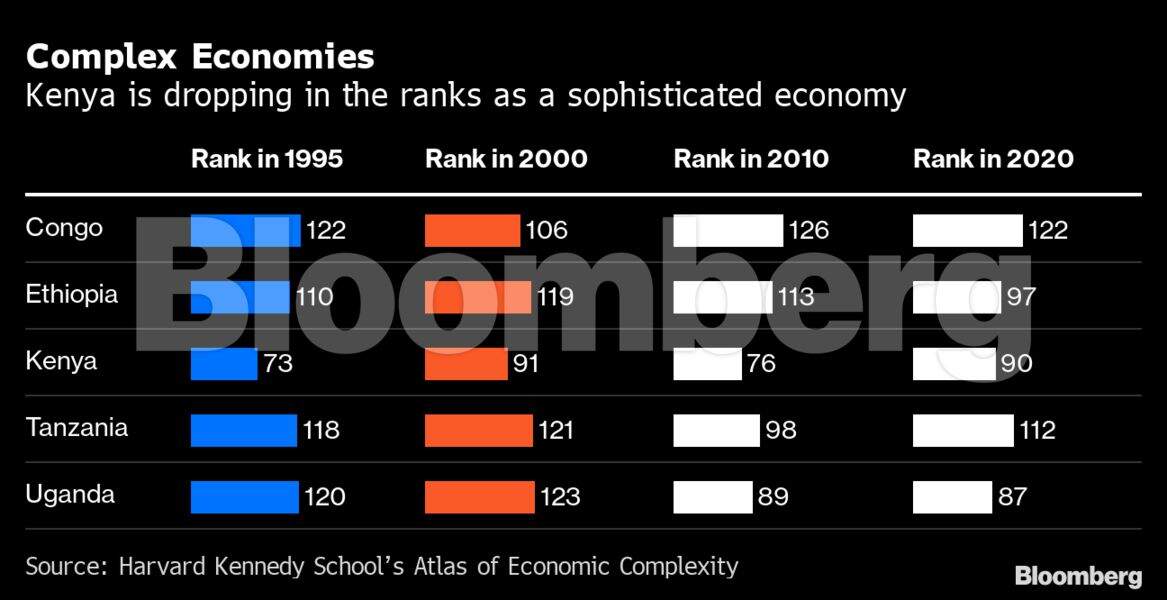
Kenya’s presidential election took place Tuesday as East Africa’s largest economy grapples with surging living costs and rampant unemployment. Deputy President William Ruto and Raila Odinga, a former prime minister who’s running for president for a fifth time, were the clear front-runners to succeed incumbent leader Uhuru Kenyatta. Final results are expected by Aug. 16.
World

When Group of Seven leaders gathered in the Bavarian Alps in June, they pledged to stand with Ukraine for the long haul. Their Group of 20 counterparts are proving less supportive. Only half have joined the international sanctions imposed on fellow member Russia over its invasion of Ukraine.
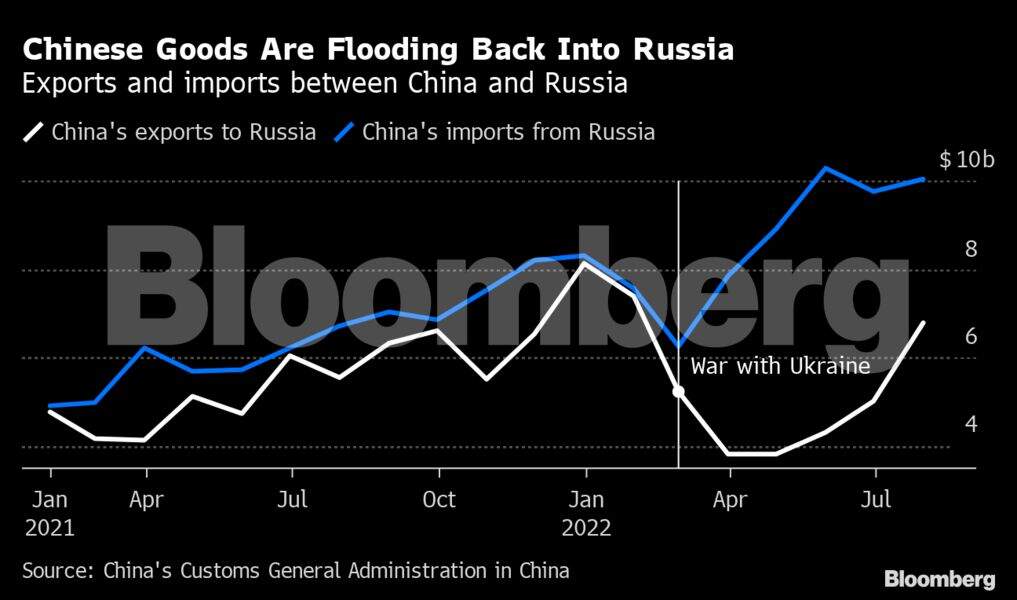
Chinese exports to Russia are back near levels seen before the Kremlin’s invasion of Ukraine, propelling a rebound in trade that’s helped cool off a historic rally in the ruble. Russia bought $6.7 billion of goods in July from China, an increase of more than a third from the previous month and up by more than an annual 20%.

Bloomberg interviewed several families — in Nigeria, India, Brazil and the US — various times between June and August last year about the swaps and sacrifices they were making in order to keep food on the table as prices rose. It turns out, chronicling what was then eye-popping food inflation wouldn’t capture the depths of what was to come.